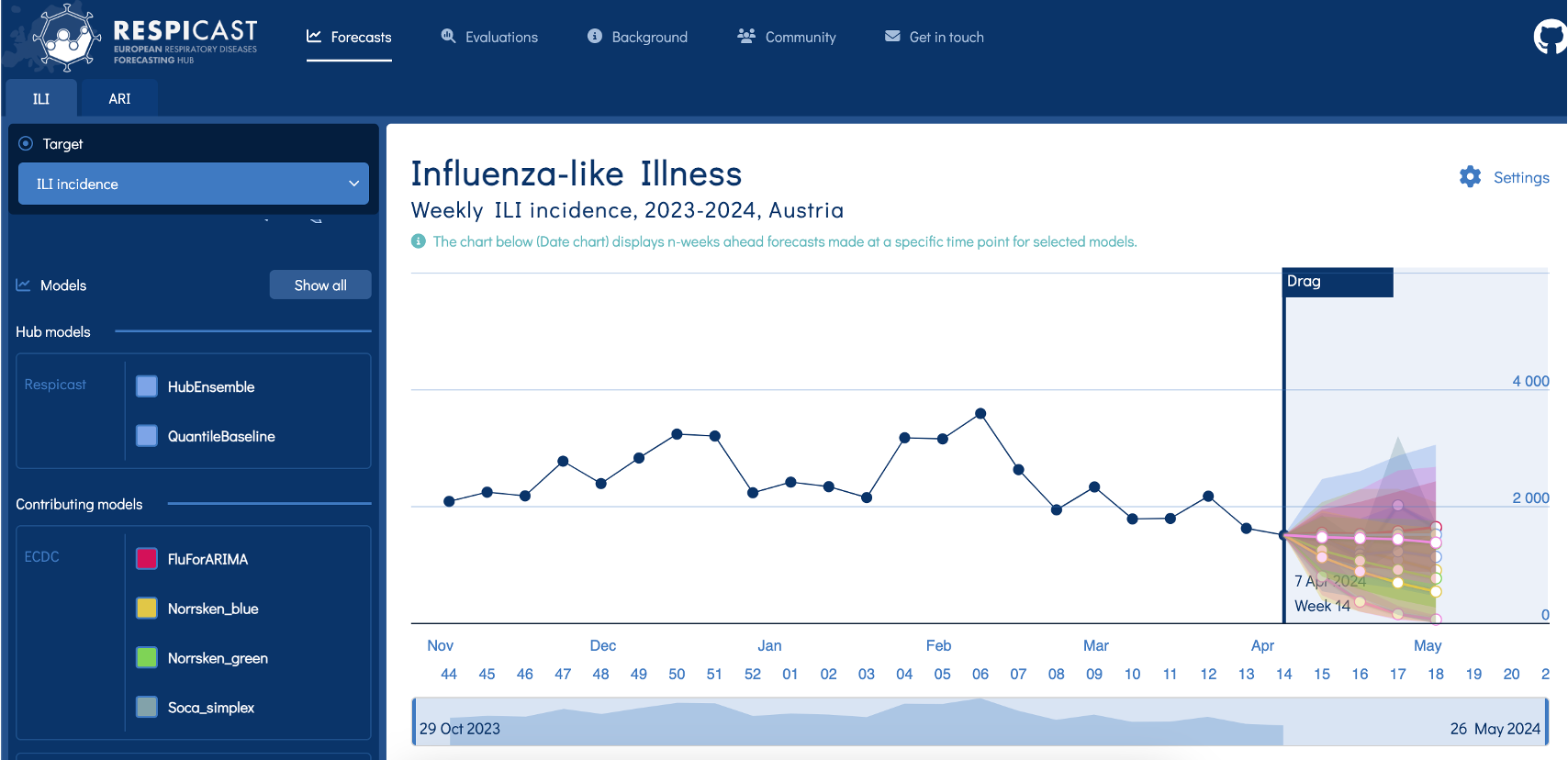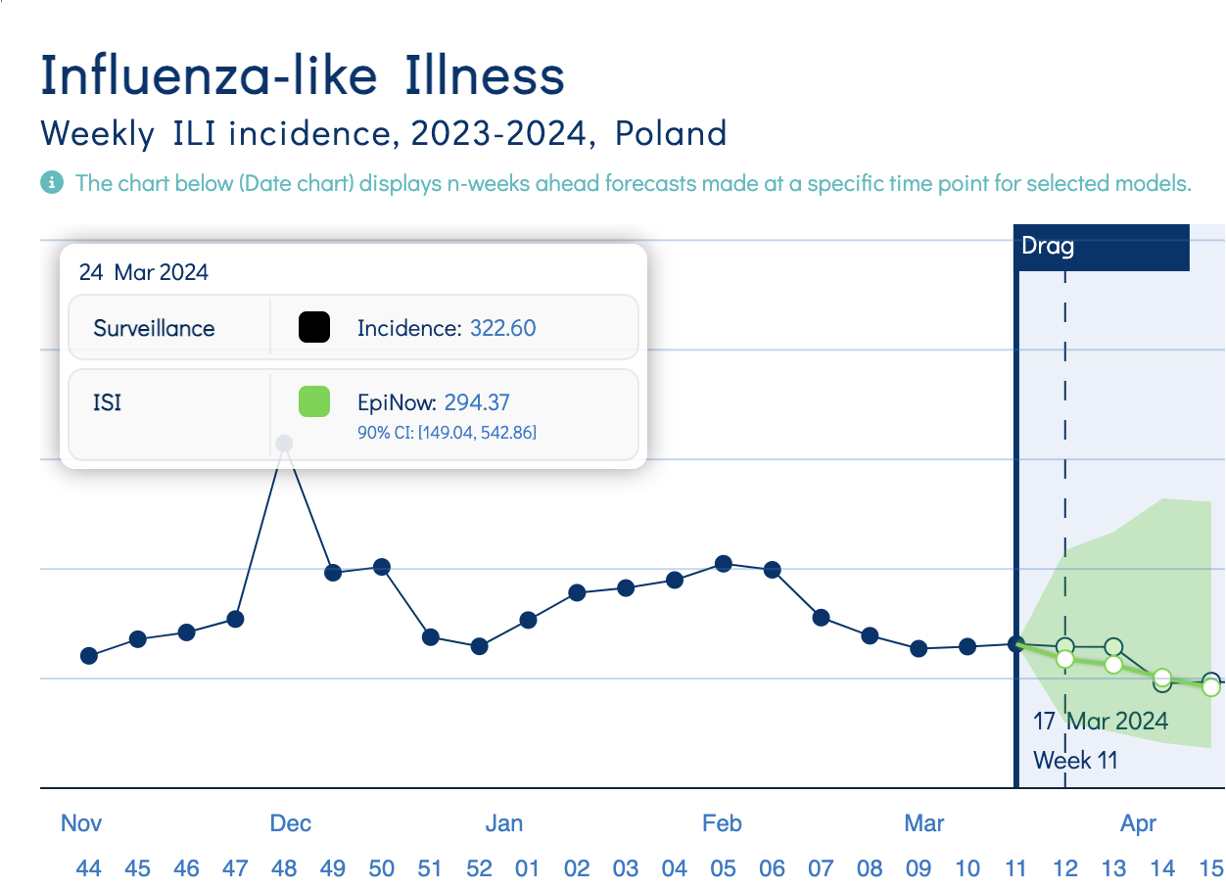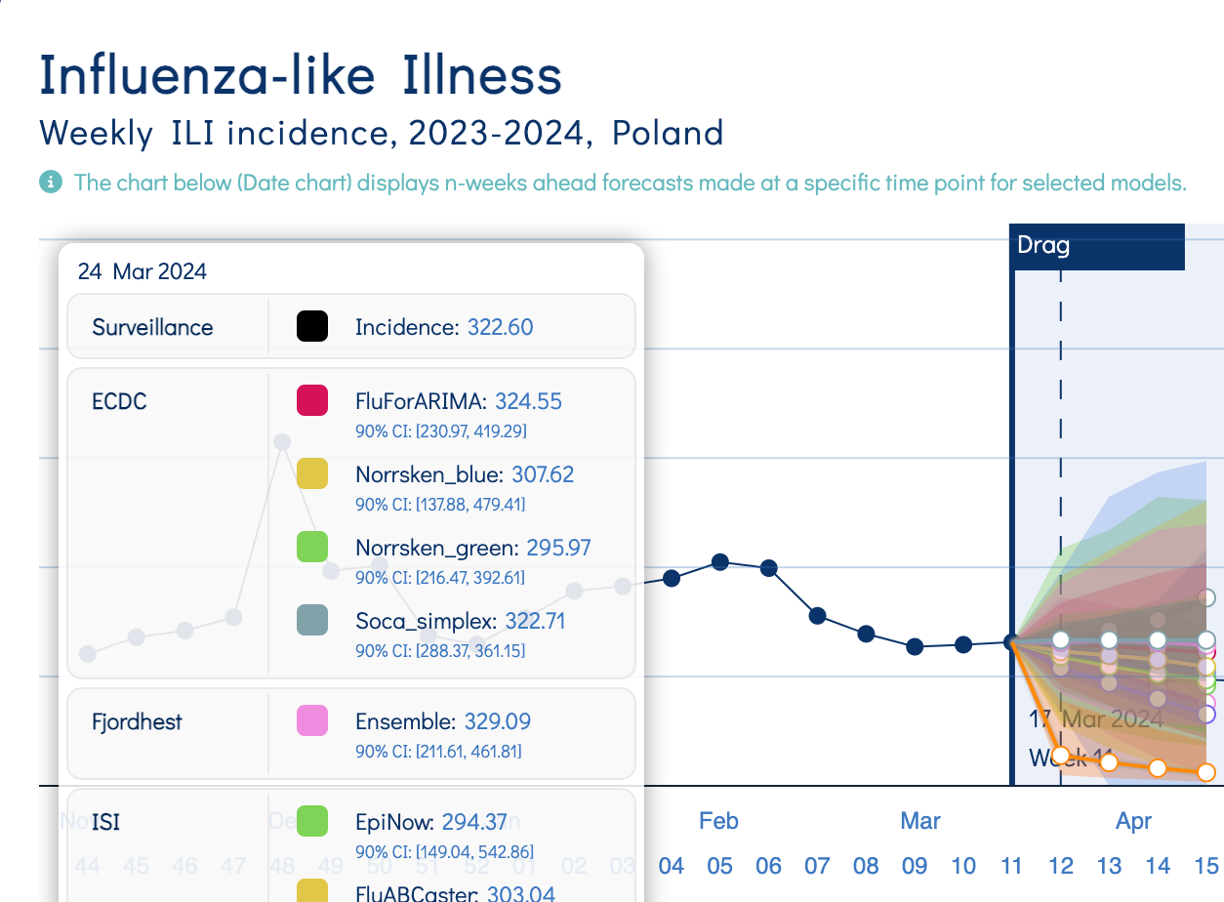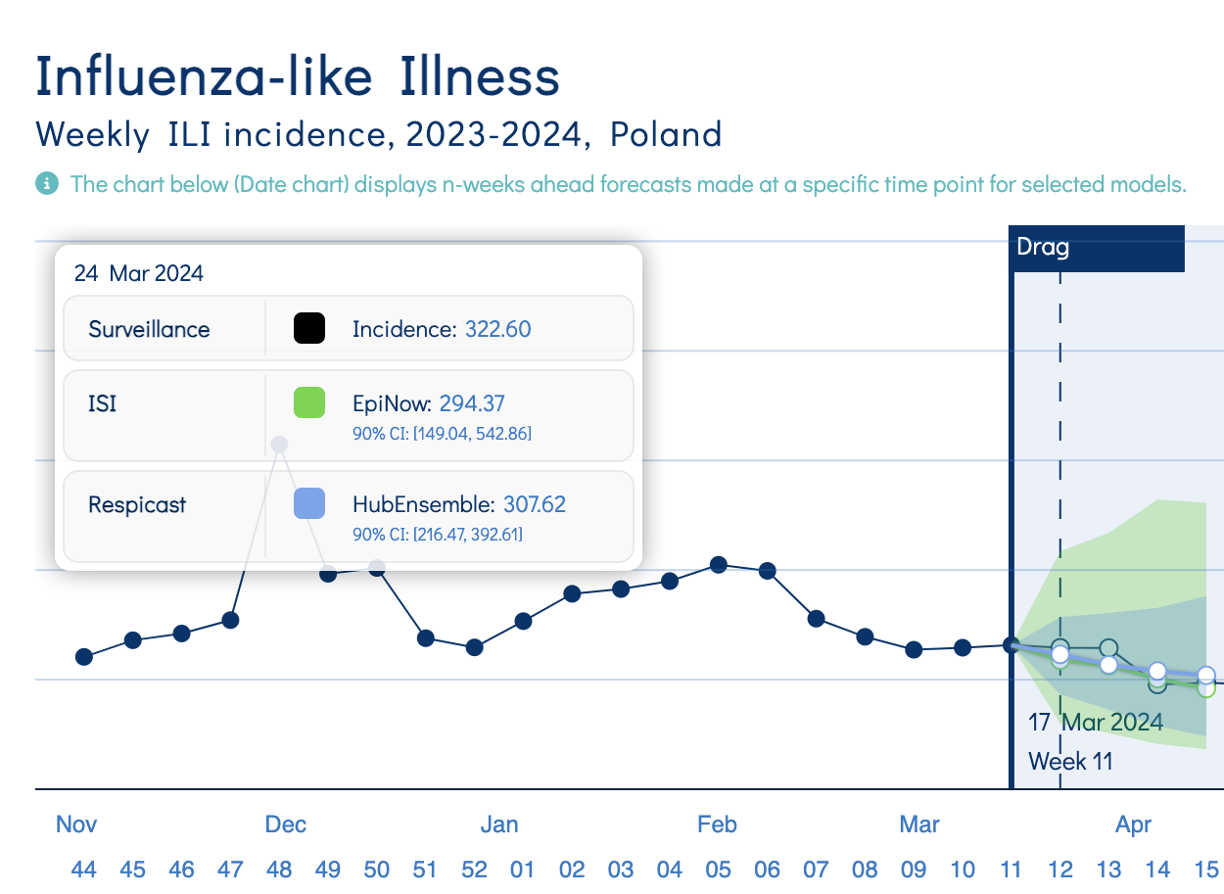Introduction to ensembles
Ensembles
- Combine many different models’ forecasts into a single prediction
Why ensemble?
Many uncertainties, many approaches: many models
Layers of uncertainty
- Model parameters
- e.g. parameterising delay distributions
- Model structure
- e.g. more mechanistic or more statistical approaches
- Model parameters
Want to use all available information
Why ensemble?
“Whole is greater than sum of parts”
Average of multiple predictions is often more performant than any individual model
History in weather & economic forecasting
Seen this in infectious disease forecasting
- “Forecast challenges”: Ebola, dengue, flu, COVID-19…
Ensemble methods
Summarising across models to create single (probabilistic) prediction
e.g. average at each models’ probabilistic quantiles
Mean
Median - trims the outliers, so narrows the uncertainty
Ensemble methods
Equal or weighted combination
Weight models by past forecast performance
- e.g. using forecast scores
Rarely better than equal average
Collaborative modelling
“Forecast hubs”
Crowdsourcing forecasts
Open source collaborative projects
Anyone able to contribute a forecast
Forecasts ensembled into a single projection
Also enables consistent evaluation
Outbreak modelling
Since 2013 for US influenza
Ebola, dengue, chikungunya, COVID-19, WNV
… European Respicast

Single model

… Multiple models

… … Multi-model ensemble

Your Turn
- Create unweighted and weighted ensembles using forecasts from multiple models.
- Evaluate the forecasts from ensembles compared to their constituent models.
Introduction to ensembles